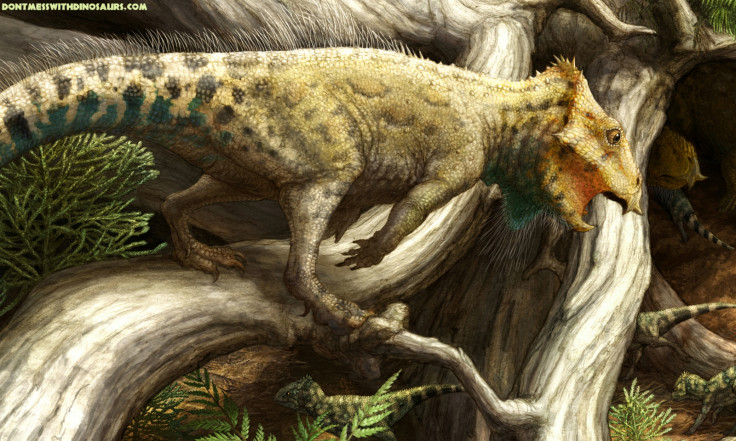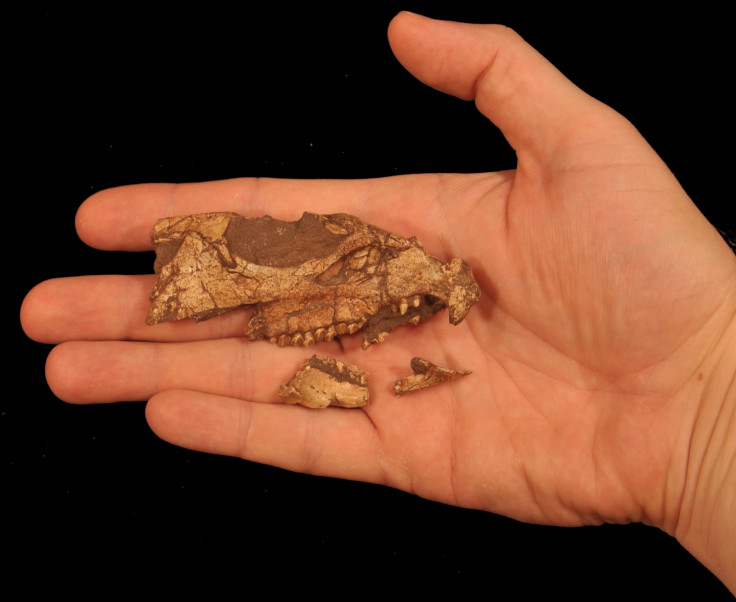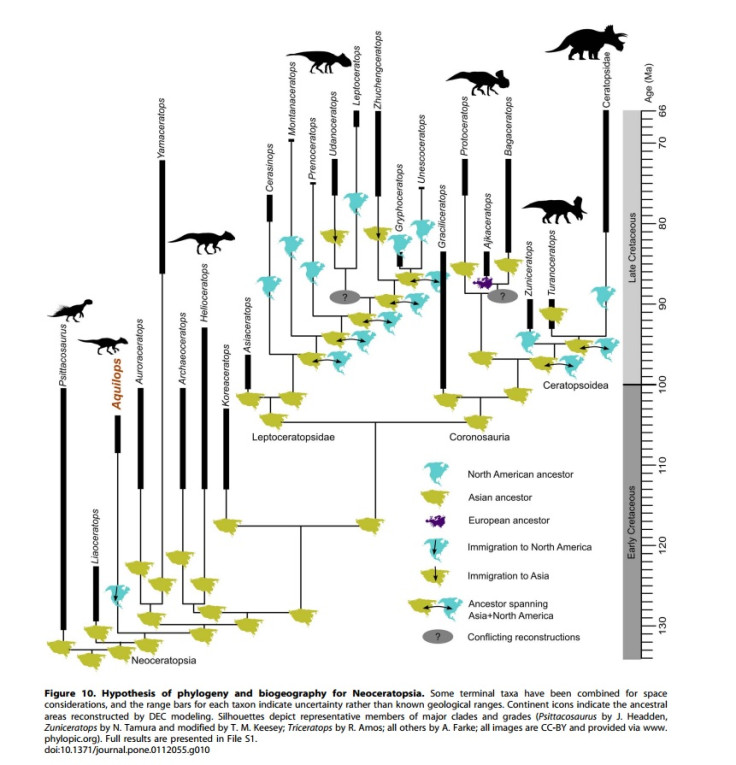Aquilops: Rare 'eagle face' dinosaur discovered is tiny relative of triceratops

The oldest horned dinosaur in North America has been discovered by palaeontologists excavating a site in Montana.
Aquilops americanus, or eagle face, is a distant relative of the triceratops, living about 40 million years before the iconic species. It is also 20 million years older than the previous oldest horned dinosaur in North America.
"When we looked at where the Aquilops lived on the family tree, it's very distantly related to triceratops and other horned dinosaurs from North America," study author Andrew Farke, from Raymond M Alf Museum of Paleontology, told IBTimes UK.
"In fact, that was probably one of the most interesting and surprising things that we found. Going in, I expected to find that this animal lived in North America, so it must have given rise to other animals in North America. But when we looked at all the features and did the analysis of where it sat on the evolutionary tree, actually it's much more closely related to animals from Asia."
Farke said the features suggest there were probably waves of immigration from Asia to North America that altered horned dinosaur species.

Aquilops was very small – one of the smallest horned dinosaurs known. The specimen found was likely not fully grown, with experts saying it was about two thirds of its full size. The creature's skull was 84mm long and authors estimate it would have been about the size of a big crow.
Published in the journal PLOS One, the species was herbivorous and would have probably been "pretty nice to chew on", for predators, Farke said.
In terms of looks, Aquilops is distinguished by a number of features, the main being a very strongly hooked rostral bone, or beak-like structure.
Farke said: "The thing that really sets this dinosaur apart and in fact what gives it is name is the unique shape of its beak on its upper jaw. All horned dinosaurs have this sharp beak and there's a bone called the rostral bone that identifies any horned dinosaur as a horned dinosaur. That's how we knew what this was.
"But the shape of the beak in Aquilops is really hooked – really curved. That's why we gave it the name Aquilops, which means eagle face – a mixture of Latin and Greek.

"We think the beak was probably well suited for snipping off vegetation. It was probably a very selective feeder picking and choosing what it wanted to eat off the salad bar."
The dinosaur also had a sharply pointed cavity over its cheeks, where its most prominent horns are located. "It's also pretty typical that it doesn't have the long horns over the brows or nose. All it had was a little bump on the front of the beak," Farke said.
Aquilops, which lived in the Early Cretaceous period, was extremely rare, Farke noted. No other specimen has ever been discovered and it probably lived on the "margins of the ecosystem".
However, what killed it off is unknown. Farke said: "It could have been local or global environmental change, maybe competition with other animals. All we can really say is that at least for the place where it lived in Montana at that time it was a very rare animal.
"Of all the fossils found in 80 years of collecting in these rocks, this is the only fossil of this particular dinosaur that's been found – not even isolated teeth – so it's very rare and that may have contributed in the end but we just don't know."
© Copyright IBTimes 2025. All rights reserved.






















